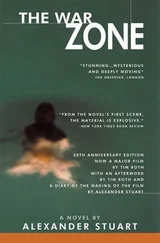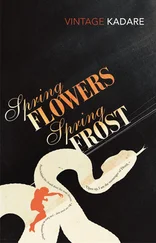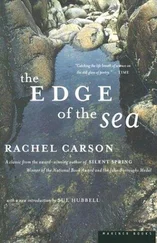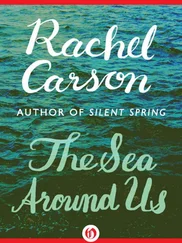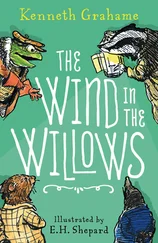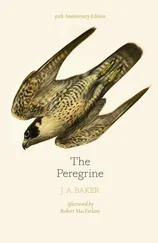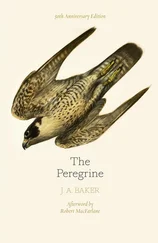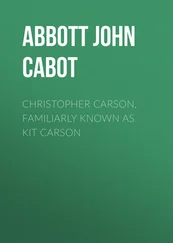In the decade of its use, endrin has killed enormous numbers of fish, has fatally poisoned cattle that have wandered into sprayed orchards, has poisoned wells, and has drawn a sharp warning from at least one state health department that its careless use is endangering human lives.
In one of the most tragic cases of endrin poisoning there was no apparent carelessness; efforts had been made to take precautions apparently considered adequate. A year-old child had been taken by his American parents to live in Venezuela. There were cockroaches in the house to which they moved, and after a few days a spray containing endrin was used. The baby and the small family dog were taken out of the house before the spraying was done about nine o’clock one morning. After the spraying the floors were washed. The baby and dog were returned to the house in midafternoon. An hour or so later the dog vomited, went into convulsions, and died. At 10 P.M. on the evening of the same day the baby also vomited, went into convulsions, and lost consciousness. After that fateful contact with endrin, this normal, healthy child became little more than a vegetable—unable to see or hear, subject to frequent muscular spasms, apparently completely cut off from contact with his surroundings. Several months of treatment in a New York hospital failed to change his condition or bring hope of change. “It is extremely doubtful,” reported the attending physicians, “that any useful degree of recovery will occur.”
The second major group of insecticides, the alkyl or organic phosphates, are among the most poisonous chemicals in the world. The chief and most obvious hazard attending their use is that of acute poisoning of people applying the sprays or accidentally coming in contact with drifting spray, with vegetation coated by it, or with a discarded container. In Florida, two children found an empty bag and used it to repair a swing. Shortly thereafter both of them died and three of their playmates became ill. The bag had once contained an insecticide called parathion, one of the organic phosphates; tests established death by parathion poisoning. On another occasion two small boys in Wisconsin, cousins, died on the same night. One had been playing in his yard when spray drifted in from an adjoining field where his father was spraying potatoes with parathion; the other had run playfully into the barn after his father and had put his hand on the nozzle of the spray equipment.
The origin of these insecticides has a certain ironic significance. Although some of the chemicals themselves—organic esters of phosphoric acid—had been known for many years, their insecticidal properties remained to be discovered by a German chemist, Gerhard Schrader, in the late 1930’s. Almost immediately the German government recognized the value of these same chemicals as new and devastating weapons in man’s war against his own kind, and the work on them was declared secret. Some became the deadly nerve gases. Others, of closely allied structure, became insecticides.
The organic phosphorus insecticides act on the living organism in a peculiar way. They have the ability to destroy enzymes—enzymes that perform necessary functions in the body. Their target is the nervous system, whether the victim is an insect or a warm-blooded animal. Under normal conditions, an impulse passes from nerve to nerve with the aid of a “chemical transmitter” called acetylcholine, a substance that performs an essential function and then disappears. Indeed, its existence is so ephemeral that medical researchers are unable, without special procedures, to sample it before the body has destroyed it. This transient nature of the transmitting chemical is necessary to the normal functioning of the body. If the acetylcholine is not destroyed as soon as a nerve impulse has passed, impulses continue to flash across the bridge from nerve to nerve, as the chemical exerts its effects in an ever more intensified manner. The movements of the whole body become uncoordinated: tremors, muscular spasms, convulsions, and death quickly result.
This contingency has been provided for by the body. A protective enzyme called cholinesterase is at hand to destroy the transmitting chemical once it is no longer needed. By this means a precise balance is struck and the body never builds up a dangerous amount of acetylcholine. But on contact with the organic phosphorus insecticides, the protective enzyme is destroyed, and as the quantity of the enzyme is reduced that of the transmitting chemical builds up. In this effect, the organic phosphorus compounds resemble the alkaloid poison muscarine, found in a poisonous mushroom, the fly amanita.
Repeated exposures may lower the cholinesterase level until an individual reaches the brink of acute poisoning, a brink over which he may be pushed by a very small additional exposure. For this reason it is considered important to make periodic examinations of the blood of spray operators and others regularly exposed.
Parathion is one of the most widely used of the organic phosphates. It is also one of the most powerful and dangerous. Honeybees become “wildly agitated and bellicose” on contact with it, perform frantic cleaning movements, and are near death within half an hour. A chemist, thinking to learn by the most direct possible means the dose acutely toxic to human beings, swallowed a minute amount, equivalent to about .00424 ounce. Paralysis followed so instantaneously that he could not reach the antidotes he had prepared at hand, and so he died. Parathion is now said to be a favorite instrument of suicide in Finland. In recent years the State of California has reported an average of more than 200 cases of accidental parathion poisoning annually. In many parts of the world the fatality rate from parathion is startling: 100 fatal cases in India and 67 in Syria in 1958, and an average of 336 deaths per year in Japan.
Yet some 7,000,000 pounds of parathion are now applied to fields and orchards of the United States—by hand sprayers, motorized blowers and dusters, and by airplane. The amount used on California farms alone could, according to one medical authority, “provide a lethal dose for 5 to 10 times the whole world’s population.”
One of the few circumstances that save us from extinction by this means is the fact that parathion and other chemicals of this group are decomposed rather rapidly. Their residues on the crops to which they are applied are therefore relatively short-lived compared with the chlorinated hydrocarbons. However, they last long enough to create hazards and produce consequences that range from the merely serious to the fatal. In Riverside, California, eleven out of thirty men picking oranges became violently ill and all but one had to be hospitalized. Their symptoms were typical of parathion poisoning. The grove had been sprayed with parathion some two and a half weeks earlier; the residues that reduced them to retching, half-blind, semiconscious misery were sixteen to nineteen days old. And this is not by any means a record for persistence. Similar mishaps have occurred in groves sprayed a month earlier, and residues have been found in the peel of oranges six months after treatment with standard dosages.
The danger to all workers applying the organic phosphorus insecticides in fields, orchards, and vineyards, is so extreme that some states using these chemicals have established laboratories where physicians may obtain aid in diagnosis and treatment. Even the physicians themselves may be in some danger, unless they wear rubber gloves in handling the victims of poisoning. So may a laundress washing the clothing of such victims, which may have absorbed enough parathion to affect her.
Malathion, another of the organic phosphates, is almost as familiar to the public as DDT, being widely used by gardeners, in household insecticides, in mosquito spraying, and in such blanket attacks on insects as the spraying of nearly a million acres of Florida communities for the Mediterranean fruit fly. It is considered the least toxic of this group of chemicals and many people assume they may use it freely and without fear of harm. Commercial advertising encourages this comfortable attitude.
Читать дальше

